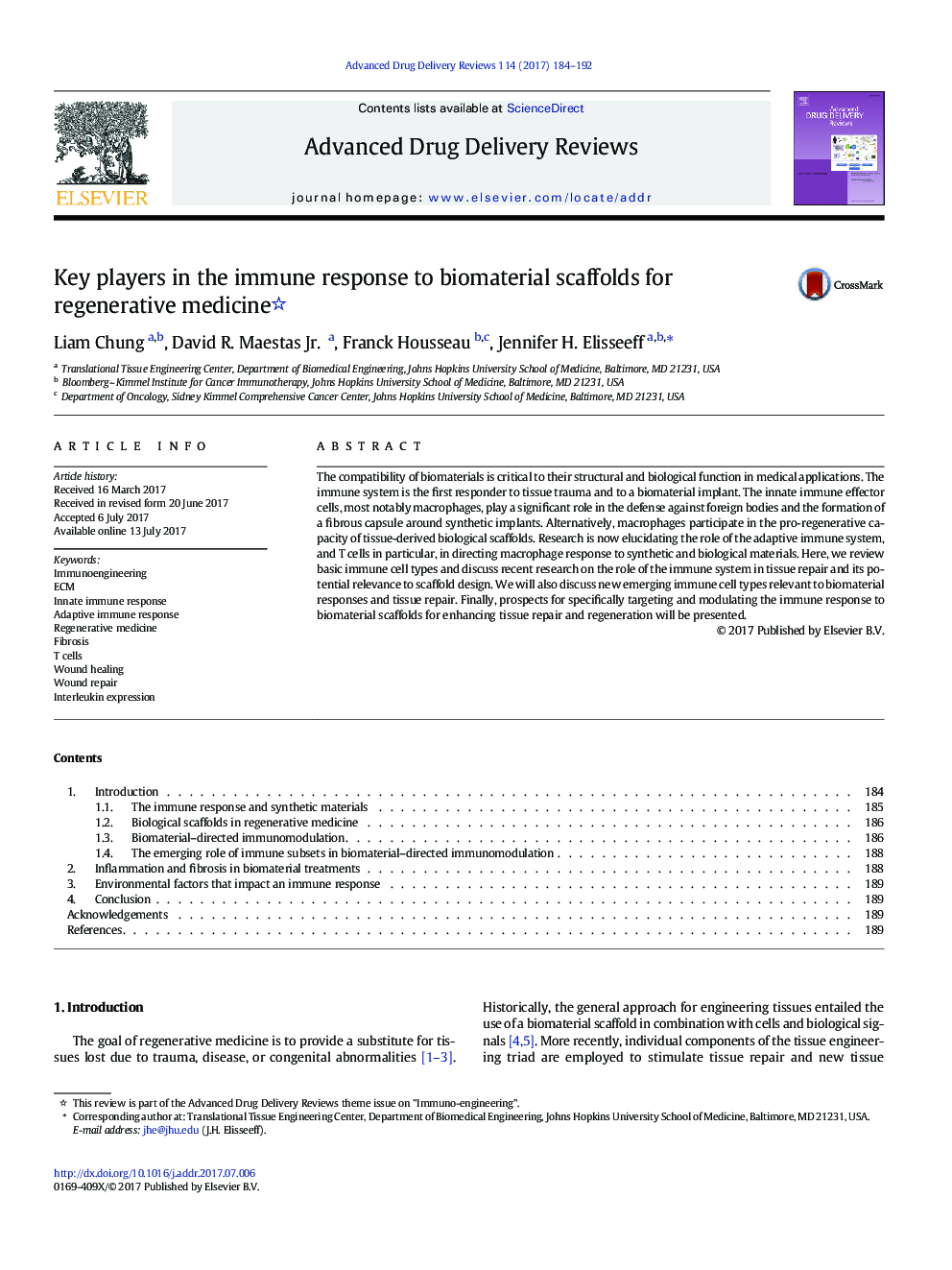| Article ID | Journal | Published Year | Pages | File Type |
|---|---|---|---|---|
| 5520090 | Advanced Drug Delivery Reviews | 2017 | 9 Pages |
The compatibility of biomaterials is critical to their structural and biological function in medical applications. The immune system is the first responder to tissue trauma and to a biomaterial implant. The innate immune effector cells, most notably macrophages, play a significant role in the defense against foreign bodies and the formation of a fibrous capsule around synthetic implants. Alternatively, macrophages participate in the pro-regenerative capacity of tissue-derived biological scaffolds. Research is now elucidating the role of the adaptive immune system, and T cells in particular, in directing macrophage response to synthetic and biological materials. Here, we review basic immune cell types and discuss recent research on the role of the immune system in tissue repair and its potential relevance to scaffold design. We will also discuss new emerging immune cell types relevant to biomaterial responses and tissue repair. Finally, prospects for specifically targeting and modulating the immune response to biomaterial scaffolds for enhancing tissue repair and regeneration will be presented.
Graphical abstractOverview of events leading to the wound repair is presented. Instantly after injuries or trauma, innate cells including granulocytes (neutrophils, and mast cells) and monocytes/macrophages are infiltrated into the wound sites. They are responsible for cleaning up the debris and secretion of pro-inflammatory cytokines such as TNFα and IL1β to prevent bacterial infection. Following the acute inflammation, mononuclear cells such as T cells and plasma cells, are recruited to further modulate the activation and polarization of macrophages and tissue specific stem cells. In a normal wound healing event, macrophages will be polarized towards a pro-healing phenotype (M2) where they recruit fibroblasts to facilitate extracellular matrix (ECM) remodeling and consequently restore tissue architecture. In the other hand, with biomaterials implantation, macrophages undergo fusion to form foreign body giant cells, resulting in foreign body response (FBR) on the material interface.Download high-res image (299KB)Download full-size image
